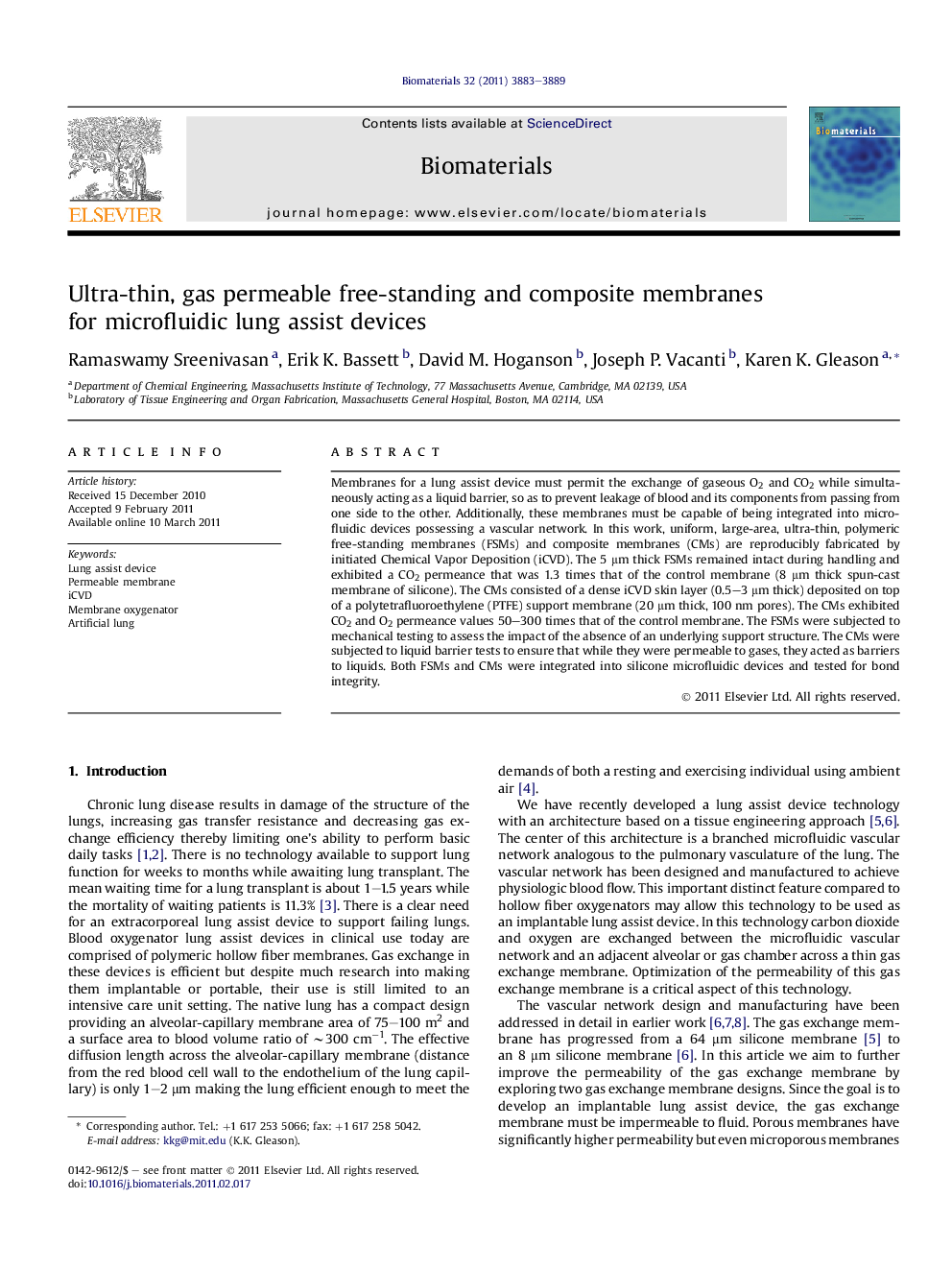| Article ID | Journal | Published Year | Pages | File Type |
|---|---|---|---|---|
| 7973 | Biomaterials | 2011 | 7 Pages |
Membranes for a lung assist device must permit the exchange of gaseous O2 and CO2 while simultaneously acting as a liquid barrier, so as to prevent leakage of blood and its components from passing from one side to the other. Additionally, these membranes must be capable of being integrated into microfluidic devices possessing a vascular network. In this work, uniform, large-area, ultra-thin, polymeric free-standing membranes (FSMs) and composite membranes (CMs) are reproducibly fabricated by initiated Chemical Vapor Deposition (iCVD). The 5 μm thick FSMs remained intact during handling and exhibited a CO2 permeance that was 1.3 times that of the control membrane (8 μm thick spun-cast membrane of silicone). The CMs consisted of a dense iCVD skin layer (0.5–3 μm thick) deposited on top of a polytetrafluoroethylene (PTFE) support membrane (20 μm thick, 100 nm pores). The CMs exhibited CO2 and O2 permeance values 50–300 times that of the control membrane. The FSMs were subjected to mechanical testing to assess the impact of the absence of an underlying support structure. The CMs were subjected to liquid barrier tests to ensure that while they were permeable to gases, they acted as barriers to liquids. Both FSMs and CMs were integrated into silicone microfluidic devices and tested for bond integrity.
